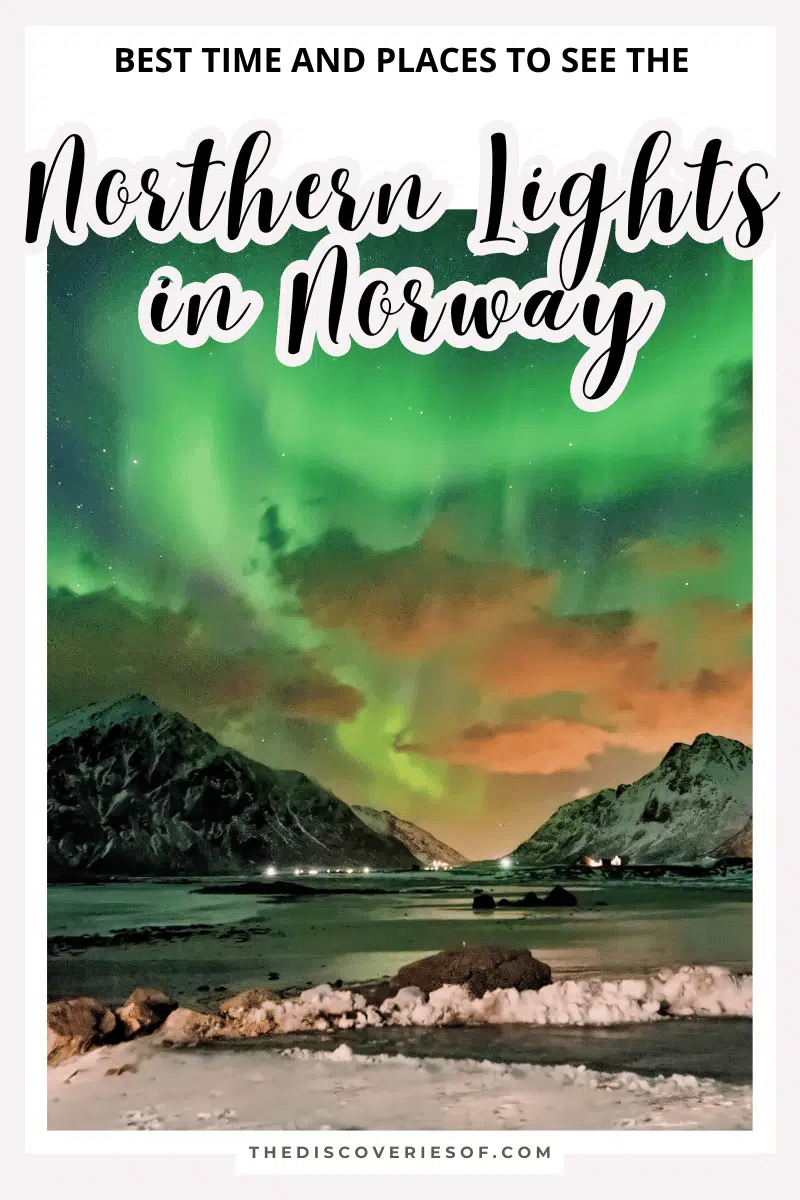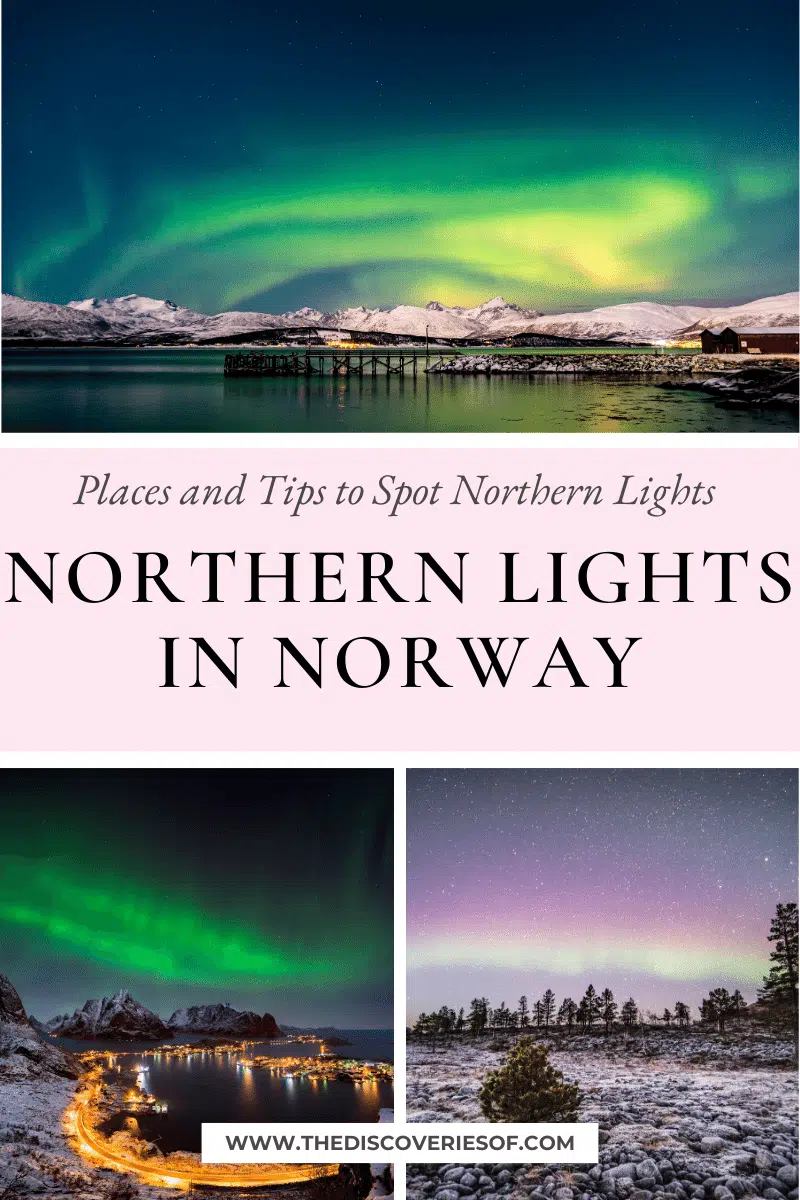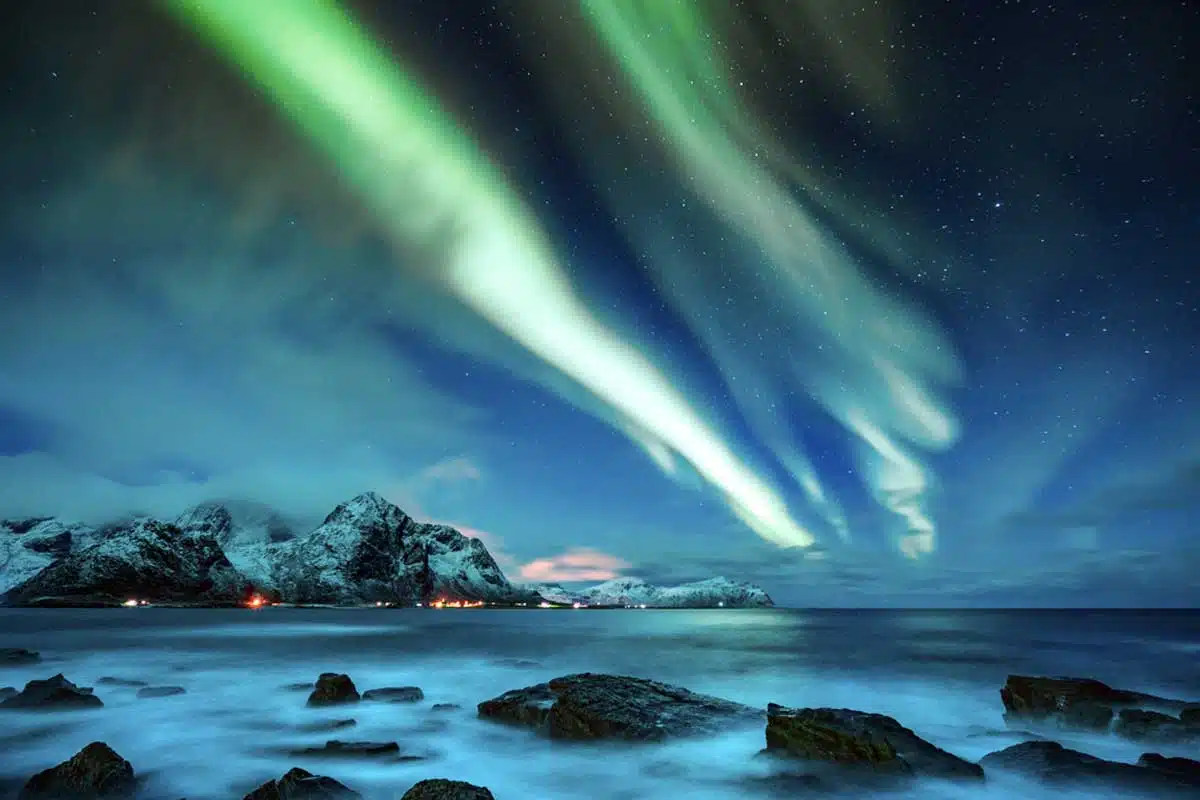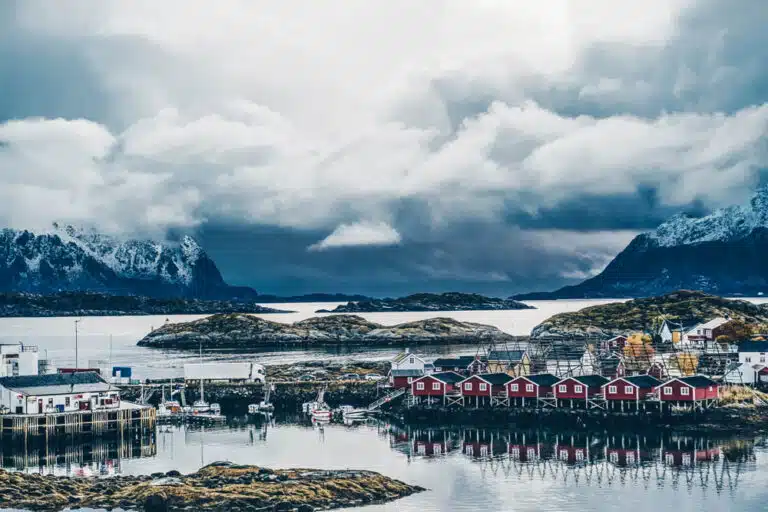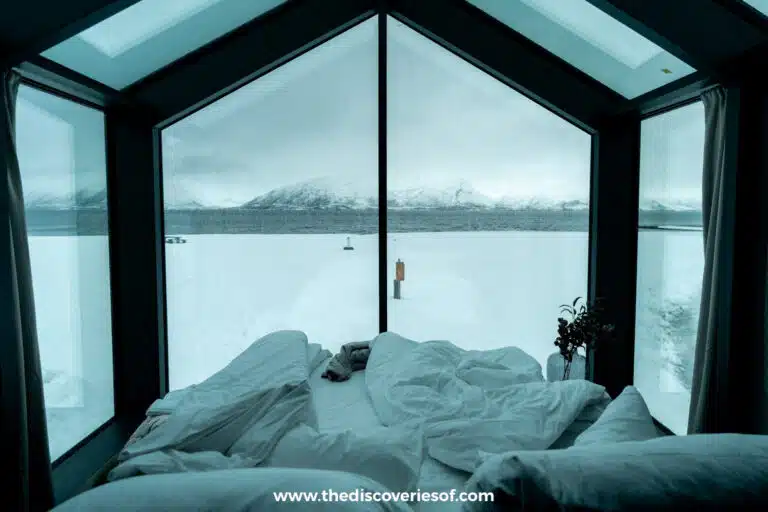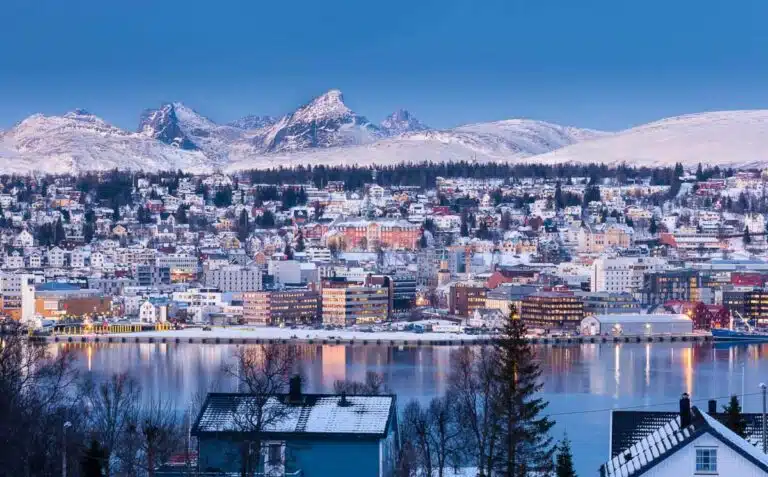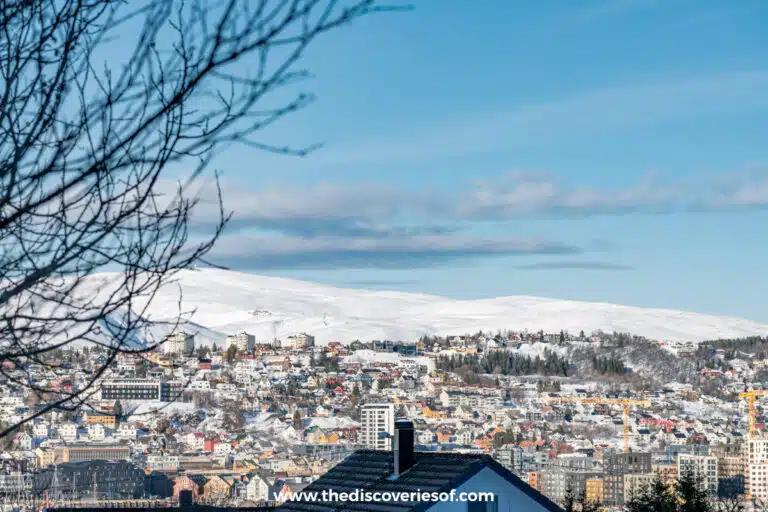Planning a trip to Norway to spot the Northern Lights? Here’s what you need to know.
I’ll admit, I got pretty lucky earlier this year on a trip to Scandinavia – I managed to spot the Northern Lights multiple times from my hotel.
Jealous? Don’t be. I’ve got the lowdown on how you can spot them too.
Now, this light show can be tricky to catch; that’s what makes it a once-in-a-lifetime opportunity for visitors living outside of the Nordic region.
Luckily, if you use this guide to plan your trip, it should go swimmingly, and you might catch the Aurora Borealis more than once.
In fact, Norway just so happens to be one of the best locations to view the Northern Lights in the world. Don’t believe me? Read on to discover how you can spot the Aurora Borealis on your Norwegian trip.
PS: Want to delve into how to plan a Northern Lights Trip? Watch this video!
When’s the Best Time to See the Northern Lights in Norway: At a Glance
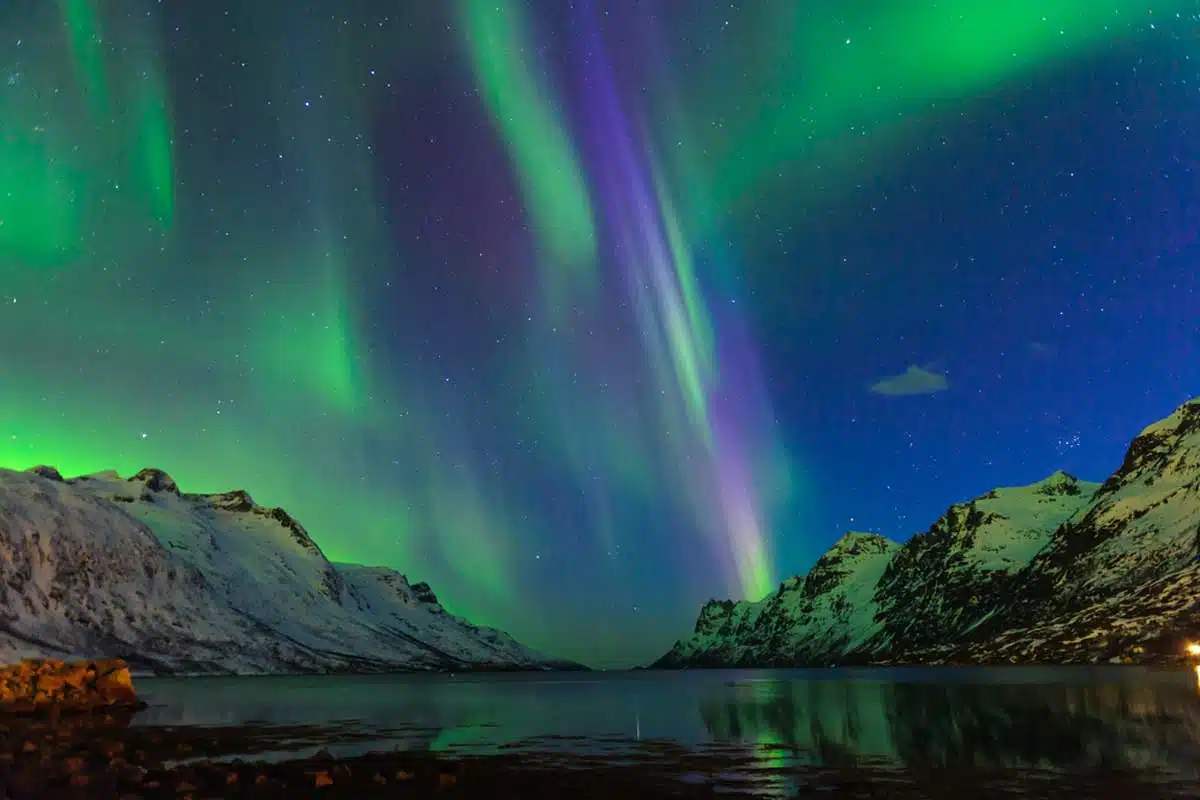
Ok, so you’ve decided on visiting Norway. But when?
Heading there between late September and early April will give you the best chance of seeing the Northern Lights. This is because there are more hours of darkness each night.
You should note that September and March are the best months, as more solar activity makes the lights shine boldly.
What are the Northern Lights?
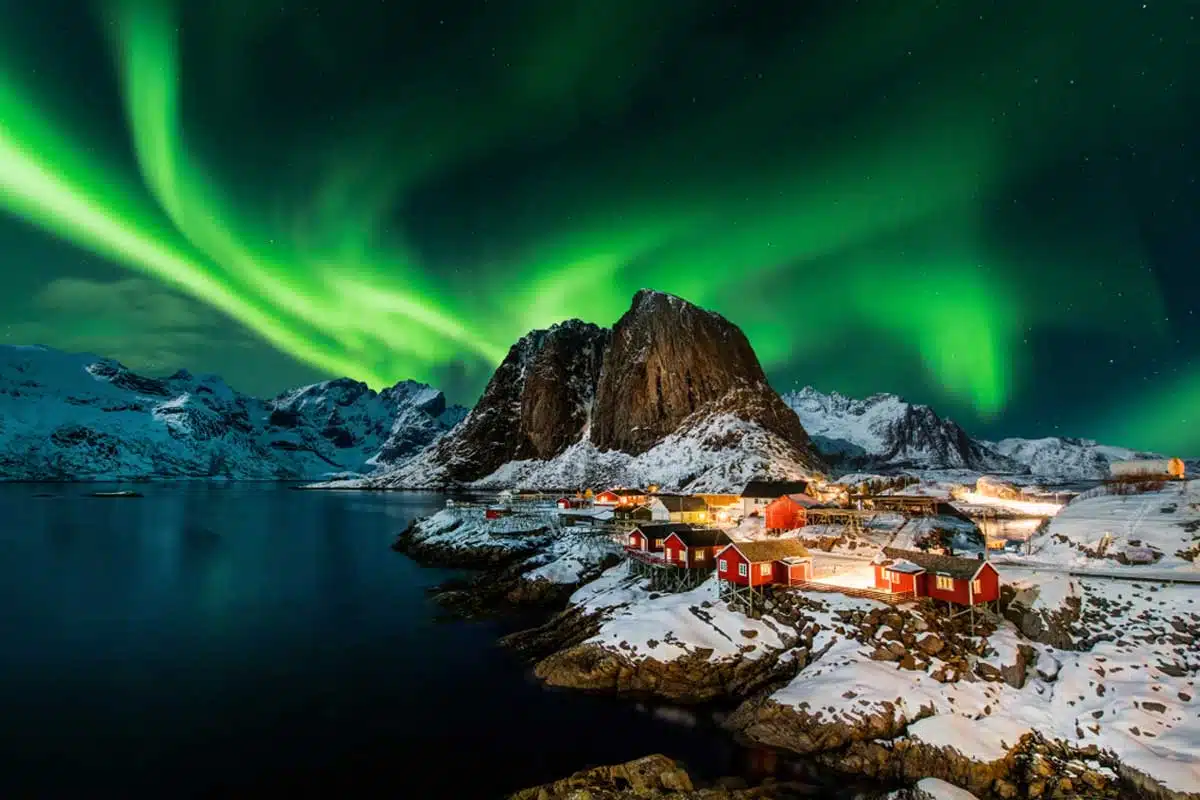
The Northern Lights, also known as the Aurora Borealis, are waves of light that dance around the sky. Aurora Borealis means ‘dawn of the north,’ and it truly is a beautiful display.
This gorgeous natural phenomenon occurs when charged particles from the sun, or photons if you want to be a little fancy, come into contact with the Earth’s atmosphere. The sun starts a solar storm, throwing off a large amount of plasma at speeds of 8km/h.
When the storm reaches Earth, it strikes a magnetic field around the planet called the magnetosphere. Particles and gases from the solar storm then travel toward the Earth’s poles and interact with nitrogen and oxygen molecules in the atmosphere. Thus, Aurora Borealis and Aurora Australis are born.
The poles are also affected by geomagnetic storms caused by solar wind shock waves. This can amplify the effects of the Northern Lights and increase their visibility. So, paying attention to these geomagnetic storms is essential if you wish to see the lights at full blast.
Can You See the Northern Lights in Norway?
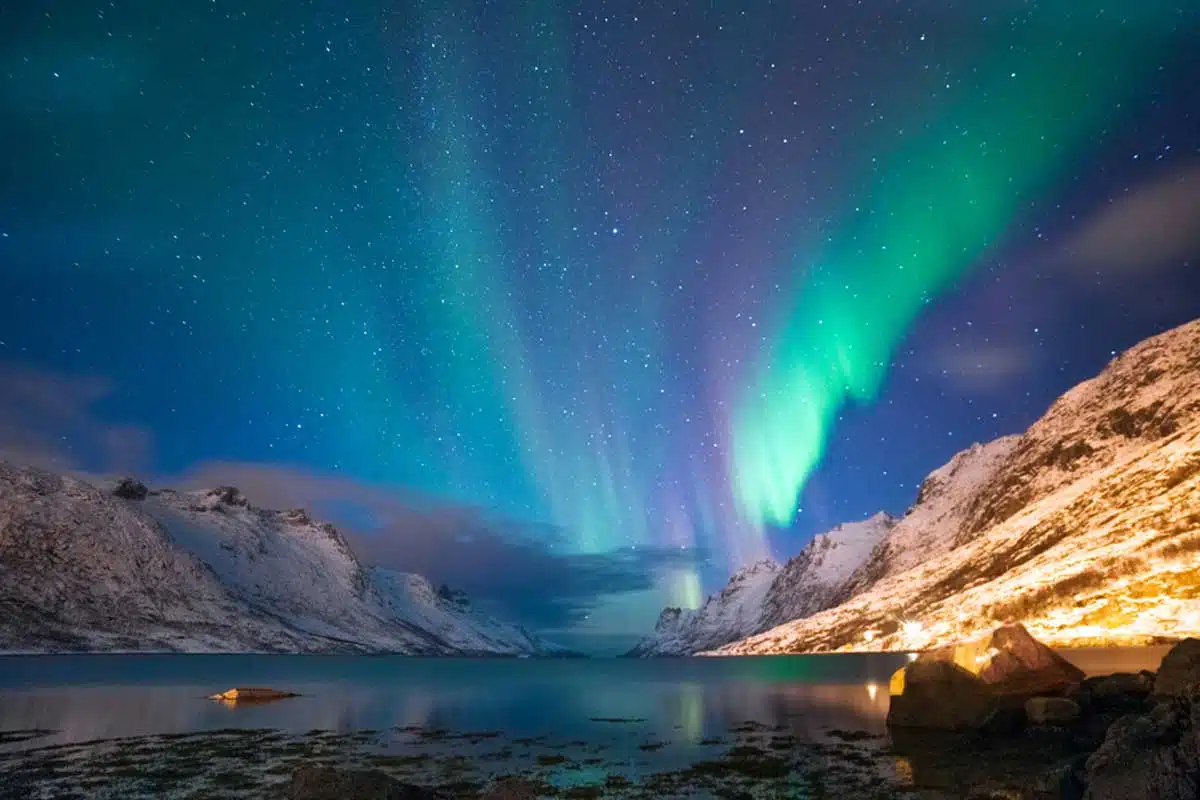
Yes! However, you must ensure you’re in a town above the Arctic circle.
For example, you won’t be able to spot them in Oslo (unless on a rare occasion where solar activity is high) as it’s too far from the circle, but Svalbard – wayyy north – is one of the best towns to catch these lights.
Where in Norway Can You See the Northern Lights?
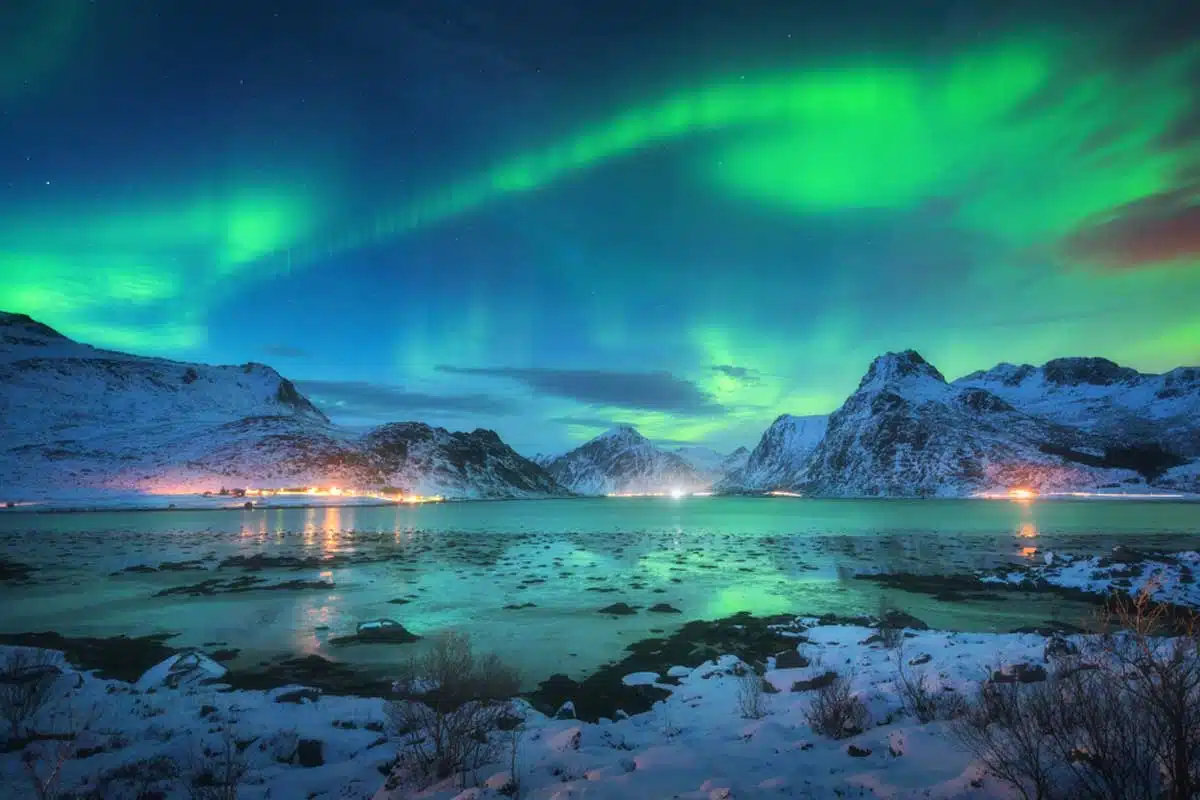
Svalbard and Kirkenes are some of the best places to catch the Northern Lights – in Kirkenes, there are 200 nights of Northern Lights activity.
That said, I would take a punt on Svalbard as the best place to see the Northern Lights in Norway.
In either area, you will have to leave the main cities to see the Northern Lights as there is too much light pollution, so prepare for a trek into the mountains or the wilderness.
Tromsø is another of the more popular areas to spot the Northern Lights as it’s far more accessible.
Do
You can watch my video about chasing the Northern Lights in Tromsø here.
This city is near the centre of the aurora zone, which makes it perfect for catching a glimpse of these lights. You can sometimes spot them from the city, but a trip to the Lyngsalpene mountain range will give you a better chance due to less light pollution.
The Lofoten Islands have one of the best locations to spot the Northern Lights. You can see them here even when there’s low solar activity.
Why, I hear you ask? Well, these islands are located just under the auroral oval, a belt of light that encircles the geomagnetic poles. Not only can you catch the lights here, but it’s also super popular due to the magnificent landscape.
Imagine sitting in one of the most beautiful natural areas while watching the Northern Lights dance through the skies. DREAM.
What is Norway’s Best Time of Year to See the Northern Lights?
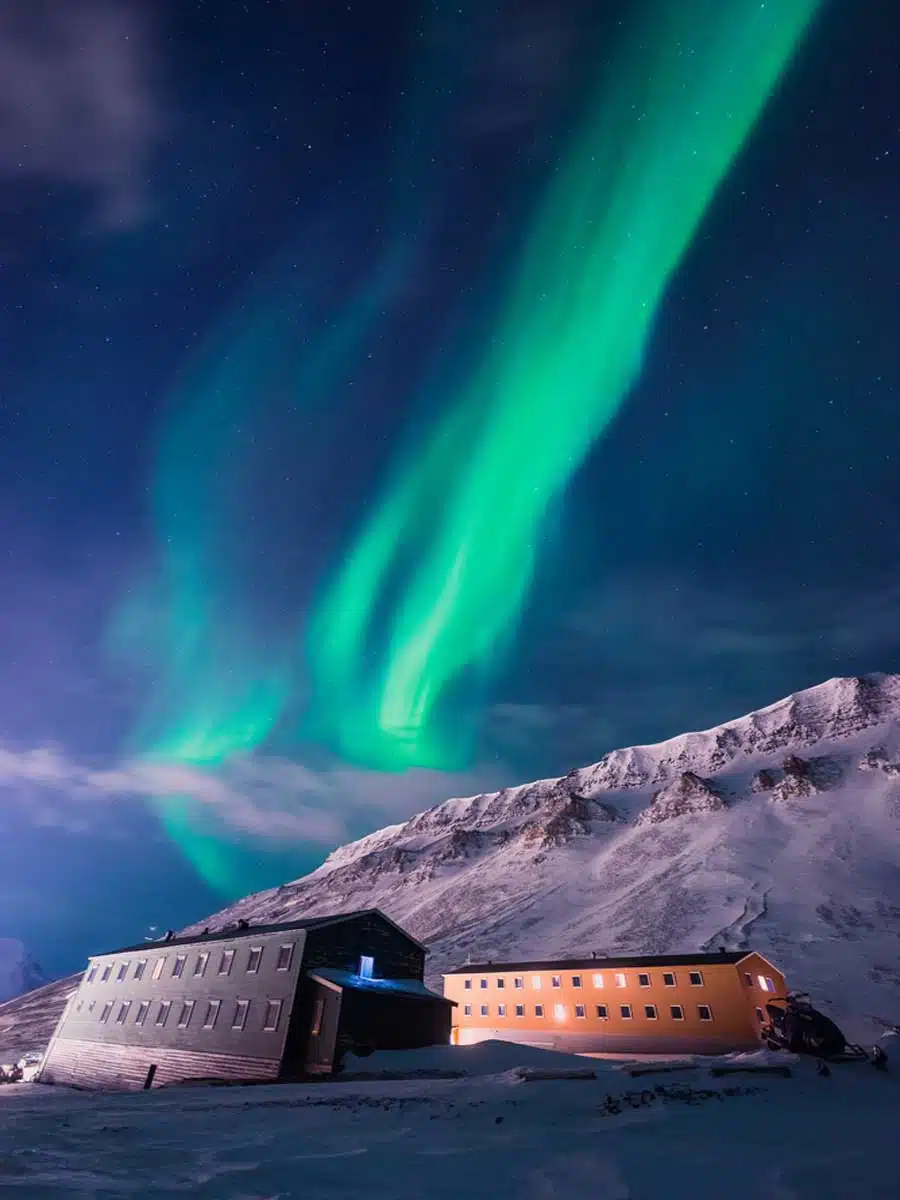
The best time to see the Northern Lights in Norway is between the spring equinox in September and the autumn equinox in March. Going during the summer months won’t give you much chance of finding them, as they have to compete with the Midnight Sun.
September and March have some of the highest levels of solar activity and are the best months to go if you wish to spot Norway’s Aurora Borealis (which you definitely do, otherwise why are you still reading this article?).
You will have the darkest and longest nights from November to February, making it the perfect time to see them. However, there’s also a higher chance of cloudy weather, and clouds don’t mix well with the lights.
Which is the Best Month to see the Northern Lights in Norway?
In a nutshell: It’s a toss-up between September and March. I vote for March.
Why are September and March The Best Time to Visit Norway for Northern Lights Viewings?
There are several reasons why September and March are the best months to see the Northern Lights.
Solar Activity
Summer wanes in September, and spring starts in March. These daylight levels bring forth quite a bit of solar activity, making it easier for the lights to form.
The Northern Lights are Stronger During the Spring and Autumn Equinoxes
Without going into too much detail, geomagnetic activity increases during the equinoxes. Geomagnetic activity, as mentioned above, makes the lights brighter and more visible.
It’s Not as Cold
Norway is incredibly cold; there are no two ways around it. However, the temperatures during September and March are not as cold as during winter. This means it will be much more comfortable to stand around and wait for the lights to show than from November to February.
Less Cloudy Weather
November to February has the longest and darkest nights, which makes it perfect for catching the Northern Lights. However, the weather has a higher chance of being cloudy during these months, and you can’t see the lights in cloudy weather.
September and March have shorter nights, but the weather has a low chance of being cloudy. So the possibility of spotting the lights is higher (even if the nights are shorter).
When to See the Northern Lights in Norway: Month by Month
Now that you know that September and March are the best months to see the Northern Lights, what would it take to find them during other months?
Northern Lights in Norway from September to October
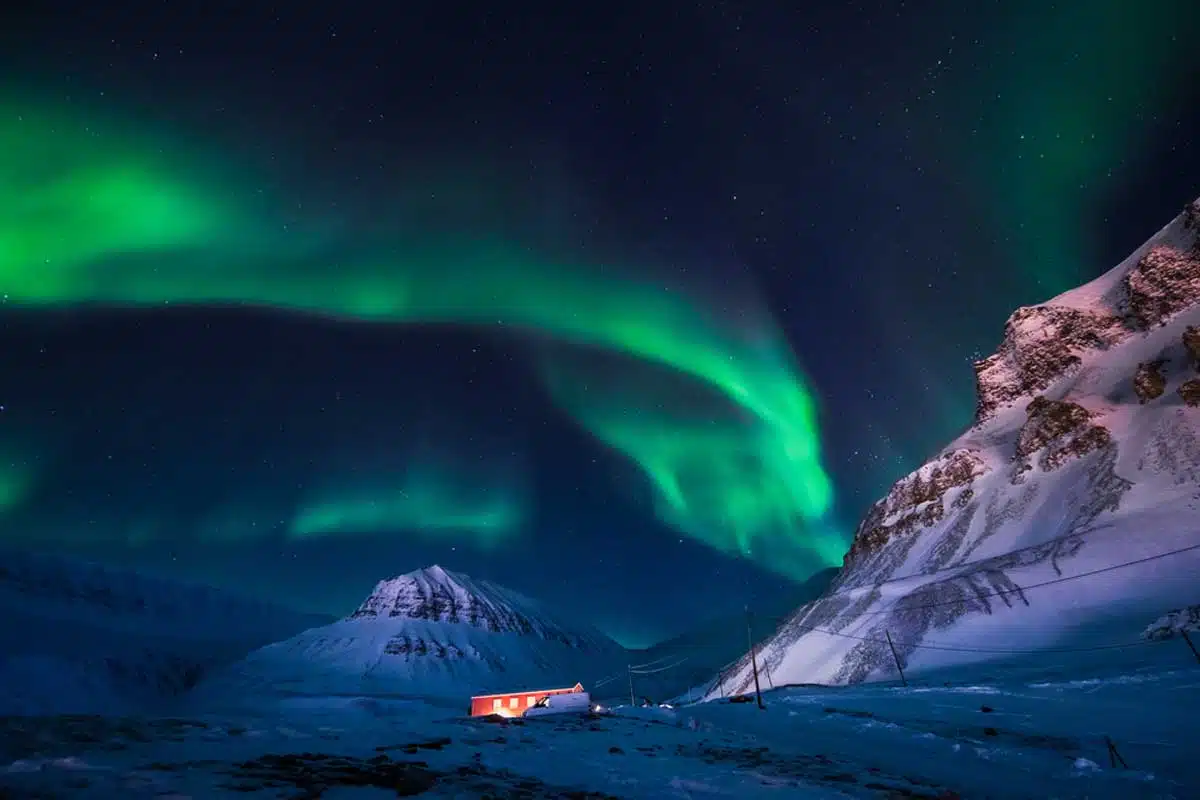
It’s the end of summer, and nights are starting to get longer – but they are not yet long enough. Luckily, high levels of solar activity make up for this, and you have a good chance of seeing the Aurora Borealis well into October.
Northern Lights in Norway from November to January
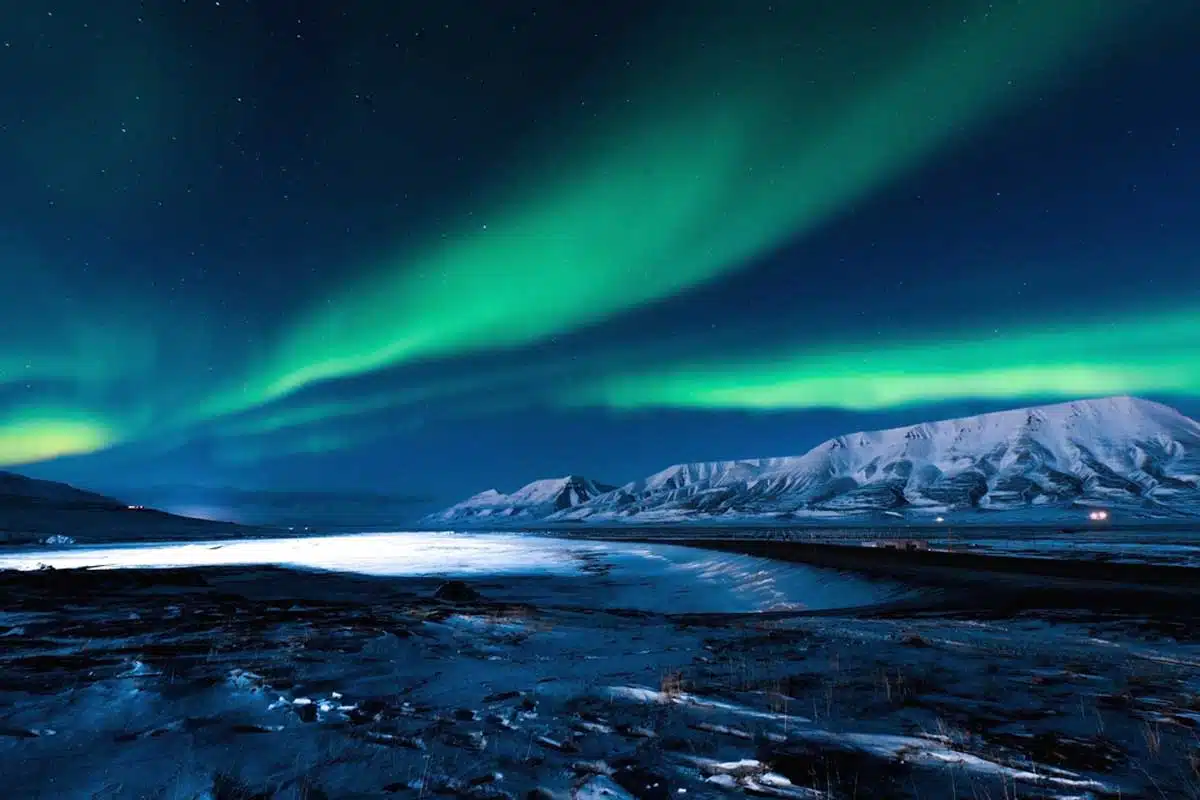
The nights are now nice and long, so you will have a good chance of spotting the Northern Lights. December is the best month to see them as November has a higher chance of having cloudy weather.
However, December is quite cold, so you’ll have to layer up if you want to spend hours waiting for the Northern Lights to appear. January is the coldest month, right in the middle of winter.
Northern Lights in Norway from February to March
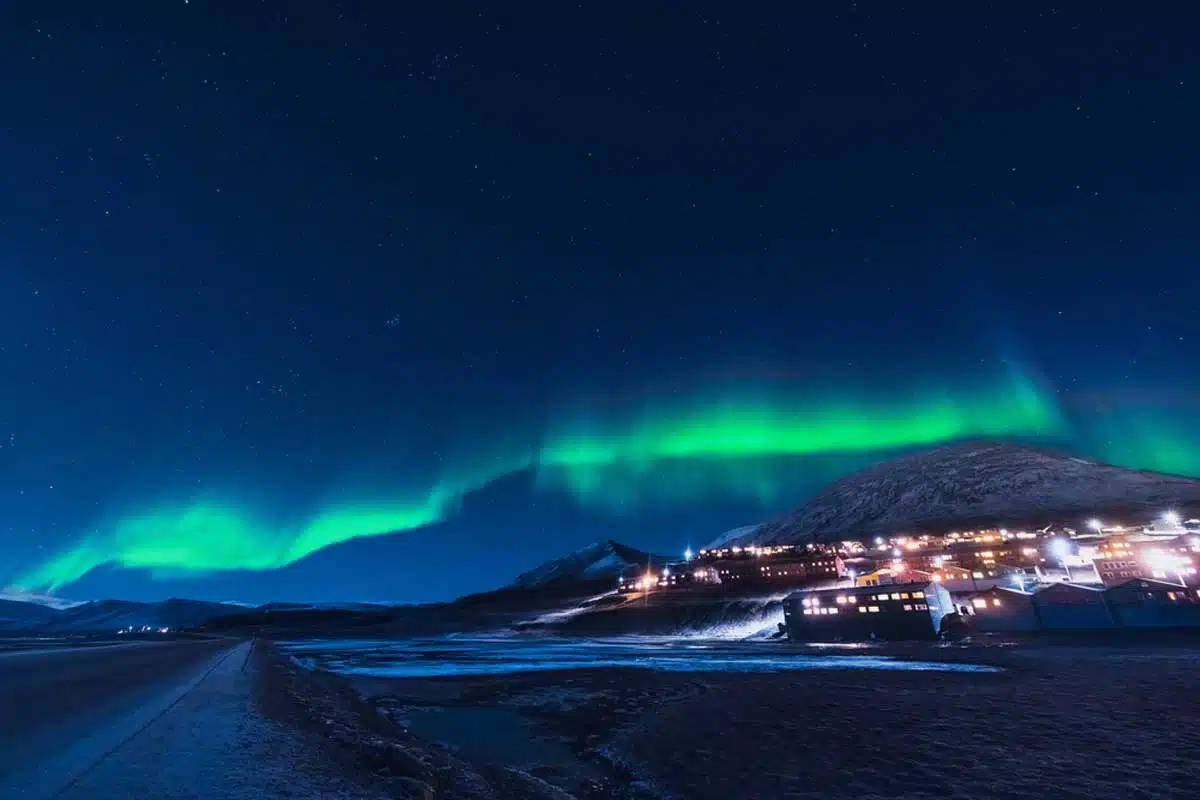
February is still freezing. However, there is a higher chance of clear skies, which makes it easier to spot the Northern Lights.
In March, the weather starts getting a bit warmer, there’s more solar and geomagnetic activity, and clear skies are everywhere, so it’s the best time to see the lights.
What Else Should I Know About Seeing the Northern Lights in Norway?
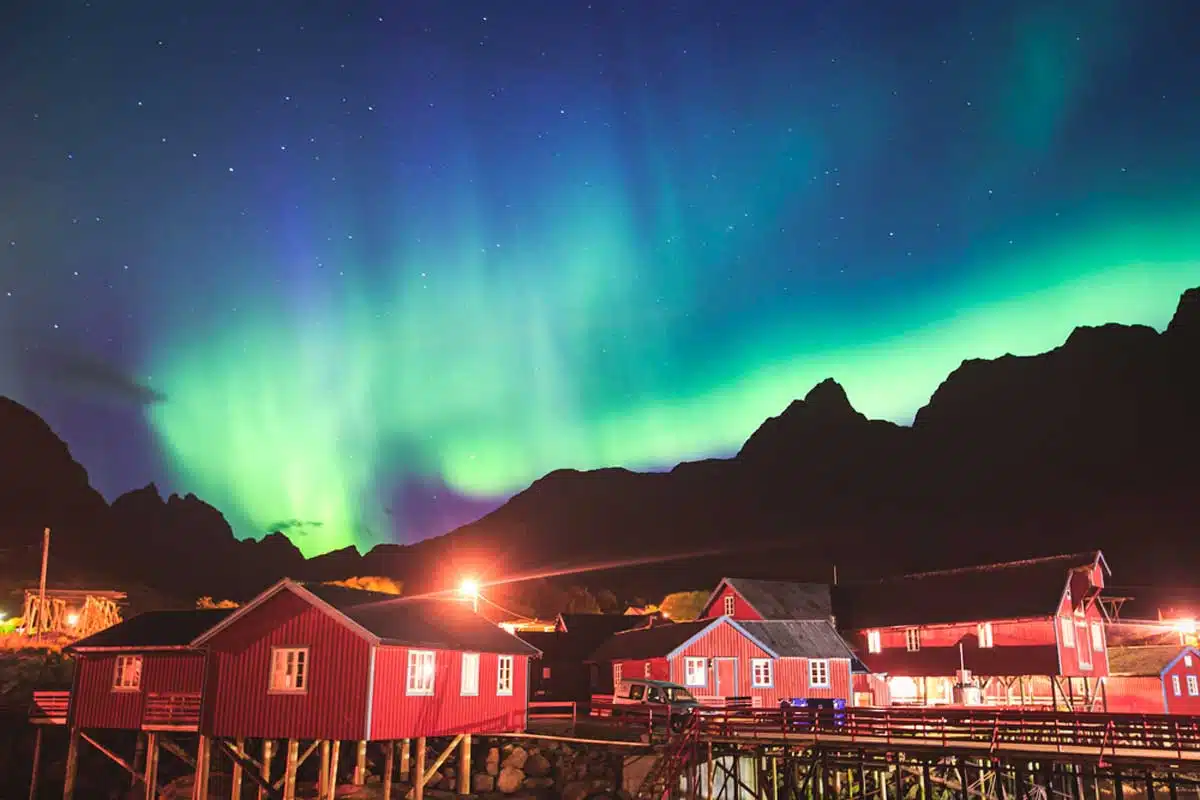
Following this guide will give you a higher chance of spotting the Northern Lights, however, aurora activity changes each year which can alter when and where you see them. The sun has an activity cycle that lasts 11 years, and every 11 years, it reaches solar maximum, where solar activity is at its highest.
The last solar maximum was in 2014, so the next one should be in 2025. Even though we’re not at the solar maximum, the Northern Lights are still bright and beautiful. However, if you want to catch them at their best, then perhaps plan to go during the next solar maximum.
You can even make a double trip – see them before the solar maximum and then again during, to compare the beauty. As if you need an excuse!
How to Plan Your Visit During the Norway Northern Lights Season
A trip to see the Northern Lights isn’t just about buying a ticket to Norway and going. There’s a bit more planning that goes into it.
Stay at a Norway Northern Lights Hotel: Eliassen Rorbuer (Recommended)
When you go on a tour to see the Northern Lights, staying at the accommodation where you have a chance to spot them from your room is one of the best ideas. Eliassen Rorbuer has wooden cabins on the Lofoten Islands that give you a great chance of seeing the lights without leaving your bed.
Go on a Northern Lights Tour
If you would prefer to stay in town to see more than just the Northern Lights, then going on a tour to find the Northern Lights is a great idea. Your tour guide will know the best places and times to see the lights, and you won’t have to spend time hunting them down on your own.
Use the Aurora App
The Aurora app is your friend if you want to find the lights. It has a real-time Northern Lights tracker and can be a guideline for seeing them. The app is a forecast app, though, so it’s not always accurate.
Northern Lights in Norway: Read Next
Love This? Save and Share on Pinterest
